Russian fleet in the Mediterranean
Then this thought was expressed in his greeting by the Advisor to the Chief of the General Staff of the Armed Forces of Russia, Admiral Igor Kasatonov, who commanded the Black Sea Fleet in 1991-1992. and retained it for Russia, and subsequently until 1999 he was first deputy commander in chief of the country's navy. Speaking about the importance and role of the squadron, the admiral noted: “The Mediterranean did not lose a single battle of the Cold War, and what they did will be preserved not only in human memory and historical annals. "The combat experience of the squadron will not be lost, and the exploits will be multiplied." Now the time has come when this experience is again in demand.
Russia has embarked on the return of its fleet to the Mediterranean Sea, and moreover, on ensuring its permanent presence in this strategically important area for it. This was recently announced repeatedly. Began and practical work on the implementation of these plans.
It must be said that in the second half of the last twentieth century, without a doubt, the Middle East was the most tense region in the military-political respect. According to the figurative expression of one of the politicians, this is where the “world political cuisine” is located. This most important region of the planet - the center of world civilization - is still the focus and knot of interweaving the interests of almost all countries of the world. Including, of course, and Russia - the great maritime power.
* * *
The history of the Black Sea Fleet of Russia, as well as the chronicle of the activities of the Russian Mediterranean squadrons (Archipelago expeditions) over the past three centuries, indicate that it was here, on the Black and Mediterranean Seas, that the most grandiose naval battles took place, which brought victory and glory to Russia, Russian sailors and the Russian arms, feats and heroic deeds were committed here.
The Mediterranean Sea, being at the junction of three continents - Europe, Asia and Africa, always occupied an important place in the foreign policy of Russia. It is worth recalling: it was in the south that the young monarch Peter Alekseevich in 1695, with his First Azov campaign, began to “cut a window to Europe”. The failure of this enterprise was due to the absence of the Russian fleet. Having built it in Voronezh and blocking Azov from the sea, next year Peter I achieved success. The result of that victory was the birth of the regular Russian fleet, leading its official history from the Boyar Duma’s verdict to “Sea ships to be”, adopted by 20 (30) of October 1696.
And this was only the beginning - the sovereign, who later decided to create a new capital of Russia on the southern sea coast, the city of Taganrog, continued, in modern terms, the implementation of the state shipbuilding program. True, history had its own way, but one way or another, one of the vectors of Russia's sovereign development was determined to the south, to the southern seas.
By the way, our ancestors understood this perfectly. As the famous English historian F. Jain wrote, “there is a widespread opinion that the Russian fleet was founded relatively recently by Peter the Great. However, in reality, it can rightly be considered more ancient than the British fleet. A hundred years before Alfred built the first English ships, the Russians had already fought in fierce sea battles, and a thousand years ago the best sailors of their time were Russians. ” And indeed it is.
From the early Middle Ages, our ancestors, fighting at sea, went to Zabosforye, reaching the lands of modern Italy and Cyprus. With the fall in the 15th century for several centuries, the Ottoman Porta became the main opponent of Russia, with which bloody wars were conducted from time to time. This was especially evident in the Catherine times.
Constantinople and the Straits are the real goal of Russian politics. This is the Orthodox idea of the “Third Rome”, but it is also security, and access to the “European” Mediterranean Sea from the Black Sea “lake” blocked by the Straits. The Straits Regime is the cardinal question of Russian security and the sovereign perspective. This was perfectly understood by Catherine the Great, who conceived and implemented her “projects” of an “eastern” and “Greek” orientation. Formally, she sought to return the crosses to the domes of Constantinople Hagia Sophia. In fact, it was about protecting the interests of the empire and expanding its zone of influence. The question was: if not Russia, then someone else. At that time - the Ottoman and British empires.
It was about the security of the southern borders and the ability to freely use the Black Sea straits. Her successor on the Russian throne, Pavel I, understood this perfectly well. Accordingly, geopolitical opponents and competitors sought to lock up Russia in the Black Sea, simultaneously creating a constant military threat to its southern borders. The “Problem of the Straits” has long become the “Achilles heel” of Russia. This was understood not only by Russian emperors and politicians, but also by the leaders of the Soviet state, primarily I.V. Stalin.
With the beginning of the next war with Turkey in 1768, Catherine II, at the insistence of Count Alexei Orlov, it was decided to send five squadrons of the Russian fleet from the Baltic to the Mediterranean Sea in order to support the hostilities of the Russian army in Moldova and the Balkans. It was a bold decision - to send ships for 8 thousands of miles to the Eastern Mediterranean, where Russian ships had never sailed. The regular fleet of Russia for the first time and, as it turned out, for a long time went beyond the Baltic Sea to sail across the ocean.
The first squadron commanded by Admiral Grigory Andreyevich Spiridov withdrew from Kronstadt 19 July 1769. It consisted of 7 battleships: Svyatoslav, Three Hierarchs, Ivanuariy, Europe, Three Saints, Northern Eagle , "Evstafy", the frigate "Hope of Welfare", the bombing ship "Thunder", 4 military vehicles and 2 messengers of the vessel.
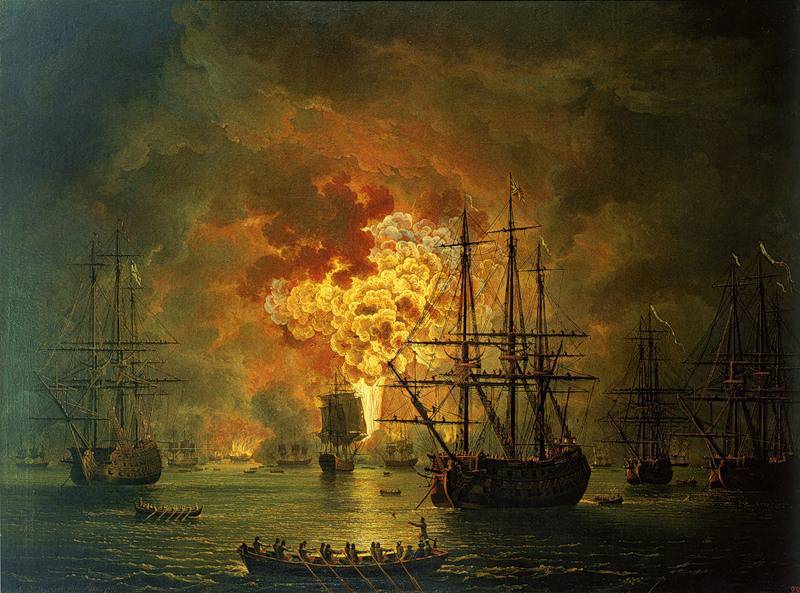
24 – 26 June 1770 was a battle took place near the island of Chios and at Chesme, during which the Russian squadron defeated the Turkish fleet. The Chesme battle was the first victory of the Russian fleet in the Mediterranean. High combat proficiency, selfless and decisive actions of the crews, outstanding skill of the ship commanders, remarkable tactical art of admirals G.А. Spiridov and S.K. Greig brought the Russian fleet a brilliant victory.
Forever went down in history the feat of Lieutenant Dmitry Ilyin, whose Brander blew up an 84-gun enemy ship and thereby predetermined the outcome of the battle. Under Chesme, Captain 1 of the rank and commander Fedot Klekachev, the future first commander of the Black Sea Fleet, commanded the lead ship of the squadron as the battleship Europa, became famous. The Empress generously rewarded the participants of the Chesmensky battle with orders, and the royal favor was granted to the entire fleet and the annual salary was not credited. In memory of the victory, a medal was stamped with the image on one side of the empress, and on the other - the burning Turkish fleet with a laconic inscription: "He was."
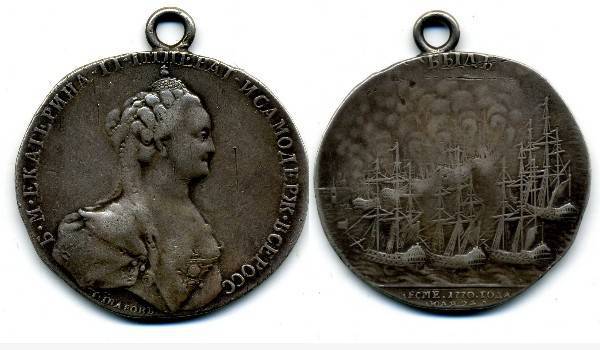
After the victory at Chesme, all of Europe began to reckon with the fact of the presence of considerable naval power of Russia in the Mediterranean. The Chesme battle made a major contribution to the development of Russian naval art. The Chesme Column in Tsarskoye Selo Park in the town of Pushkin is a remarkable monument in honor of a brilliant victory that reminds her descendants of all times.
The most important event of that era was the annexation of the Crimea to Russia, the creation of the Black Sea Fleet and the foundation of its main base, the sea fortress of Sevastopol (1783). Russia actually “printed out” the last quarter of the 18th century with the realization of plans to return to the Black Sea its former name - the Russian Sea. The power grew by the lands of Novorossia and the Kuban, Taman and the Caucasus, and the seashore from Colchis to the Danube. The sovereign gaze was most definitely directed at Constantinople, which fell under the onslaught of the Ottomans in 1453 and became Istanbul. This not only frightened and caused displeasure with the future "Mistress of the seas", but also gave rise to threats. Britain could not allow Russia to seize the "key of the revival of Byzantium" under the St. Petersburg protectorate - the Bosporus and the Dardanelles.
“The arrogance of the Russian cabinet is becoming intolerable for Europeans. After the fall of Ochakov, the goals of the Russian policy on the Bosporus are visible, the Russians will soon come to the Nile to occupy Egypt. Let us remember: they have already opened the gates to India, ”wrote the British Prime Minister in 1791, Mr. William Pitt Jr. Then he threatened Russia, trying to make an alliance with Prussia against her: “We will not only turn Petersburg into pitiful ruins, but we will also burn Arkhangelsk shipyards. Our squadrons will overtake Russian ships even in the shelters of Sevastopol! And then let the Russians float on rafts like primitive savages. ”
These threats did not come true. However, like the plans of the Russian empress - her grandson, not accidentally and with a long-range view, named Constantine, did not become the “Byzantine king” ...
One of the most significant stages in the history of the combat activity of the Russian fleet in the Mediterranean was the period associated with the wars against Napoleonic France. Here the flotation talent of Admiral Fedor Fedorovich Ushakov was most clearly manifested. The combined Mediterranean squadron under his command for two years (1798 – 1800) freed the Ionian Islands from the French, where the republic was proclaimed and the base of the Russian fleet was created.
The Russian squadron under the command of Admiral Ushakov approached the Ionian Islands and blocked the island of Corfu, which was the key to the entire Adriatic. The attack of the island’s fortified fortress from the sea forced the French garrison to surrender 2 March 1799.
Mastering the storming of the fortress of Corfu (18 – 19 February 1799), which was considered impregnable, was one of the heroic feats of the Russian sailing fleet. Learning about this victory, A.V. Suvorov could not resist the exclamation: "Hurray! Russian fleet! .. Why was I not at Corfu, although midshipman! .. "For the capture of the island of Corfu FF Ushakov was promoted to admiral. In 2000, he is canonized by the Russian Orthodox Church.
In 1805 – 1807 in the Mediterranean, a Russian squadron operated under the command of Vice Admiral Dmitry Nikolaevich Senyavin. Brilliant victories were won by a squadron under his leadership during the Dardanelles (10 in May 1807) and Athos (21 in June 1807) battles, as a result of which she completely defeated the Turkish fleet.
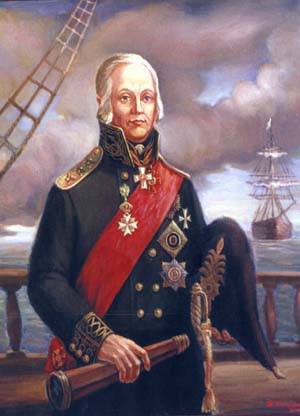
In the Battle of Navarino (October 8 1827) Russian squadron commanded by Rear Admiral L.P. Heyden, acting in the composition of the allied fleet with the British and French, had the greatest success in defeating the Turkish-Egyptian fleet. Subsequently, this victory had a significant impact on the signing of the Adrianople peace treaty beneficial to Russia with Turkey in 1829.
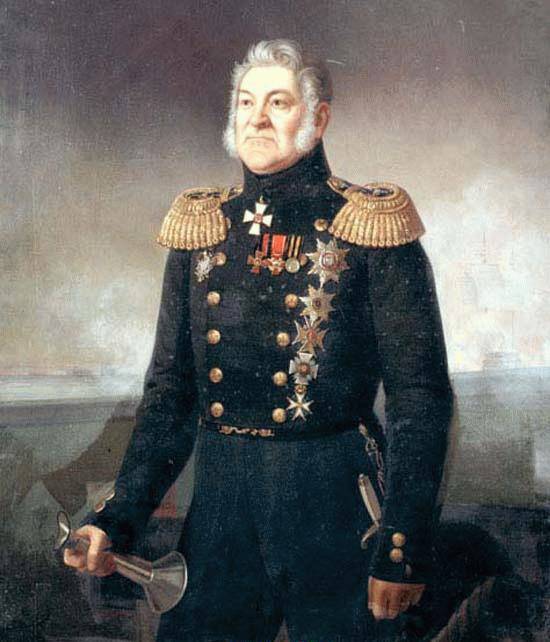
The flagship of the Azov squadron under the command of Mikhail Lazarev, an 1 captain, was particularly successful in battle. Then lieutenant P.S. Nakhimov, midshipman V.A. Kornilov and midshipman V.I. Istomin, the future famous admirals. The crews of other ships of the squadron, including the battleship Gangut, Ezekiel, Alexander Nevsky, the frigates Provorny, Elena, Kastor, Konstantin and others, skillfully and courageously fought and fought bravely and courageously. In their report on the results of the battle of Navarino, Rear Admiral Heyden wrote that Russian sailors "fought like lions against a numerous, strong and stubborn enemy."
Participants of the battle were awarded orders, including sailors, officers - with golden weapons, and MP Lazarev was promoted to Rear Admirals. The crew of the "Azov" was awarded a special certificate and a stern St. George flag, which was then established for the first time in the history of the Russian fleet and raised on a ship. Then the naval guard was born.
So, the entire 4 squadron of the Russian fleet under the command of the famous admirals won the loudest victories in the battles in the Mediterranean in the XVIII – XIX centuries. Perhaps that is why the 5-I Mediterranean squadron of the Navy of the USSR, performing tasks in the Mediterranean in the XX century, received the famous 5 number, thus confirming the inexorable and historically formed continuity of generations in the Russian fleet. Another explanation of the numbering of the 5 of the Mediterranean squadron is not excluded, and the priority in this belongs to the Admiral of the Fleet of the Soviet Union, Commander-in-Chief of the Soviet Navy S.G. Gorshkov, who stood at the origins of the creation of the squadron. According to eyewitnesses, he allegedly owns the words that the US Navy under number 6 can withstand the squadron only under number 5.
* * *
In the XIX century, Russia not only maintained, but also increased its presence in the Mediterranean. Emperor Paul I, to whom the Russian fleet was largely responsible for achieving the peak of its development at the end of the 18th century, to a large extent fulfilled its hope of mastering Malta. Malta was even declared the province of the Russian Empire, but failures in the “Big Game” for dominance in the Near and Middle East, which conspiracy prepared by the British and the murder of Pavel became part of, did not allow the flag of St. Andrew to be raised in La Valette.
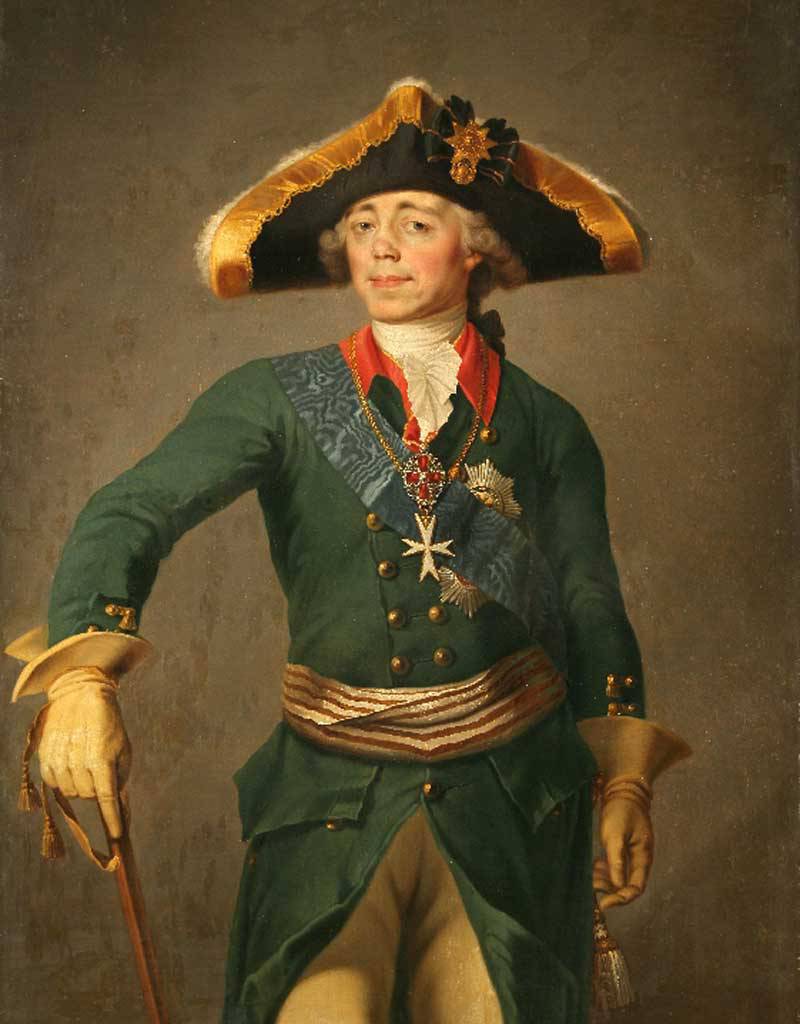
Britain stood in the way of the growth of the sea power of Russia. One of the main conductors of British influence at the Russian Tsar’s court was the Russian ambassador in London (from 1784 to 1800 and from 1801 to 1806) Count Semen Romanovich Vorontsov, an Englishman and an Anglophile, who lived in England until his death (1832). Unsuccessfully lobbied for British interests, including striving to undermine the power of the Russian fleet, and other representatives of the Russian political elite. Result: in the first quarter of the XIX century, Russia lost its sea power, in the empire it defeated the land thinking that was strongly imposed on it from the outside.
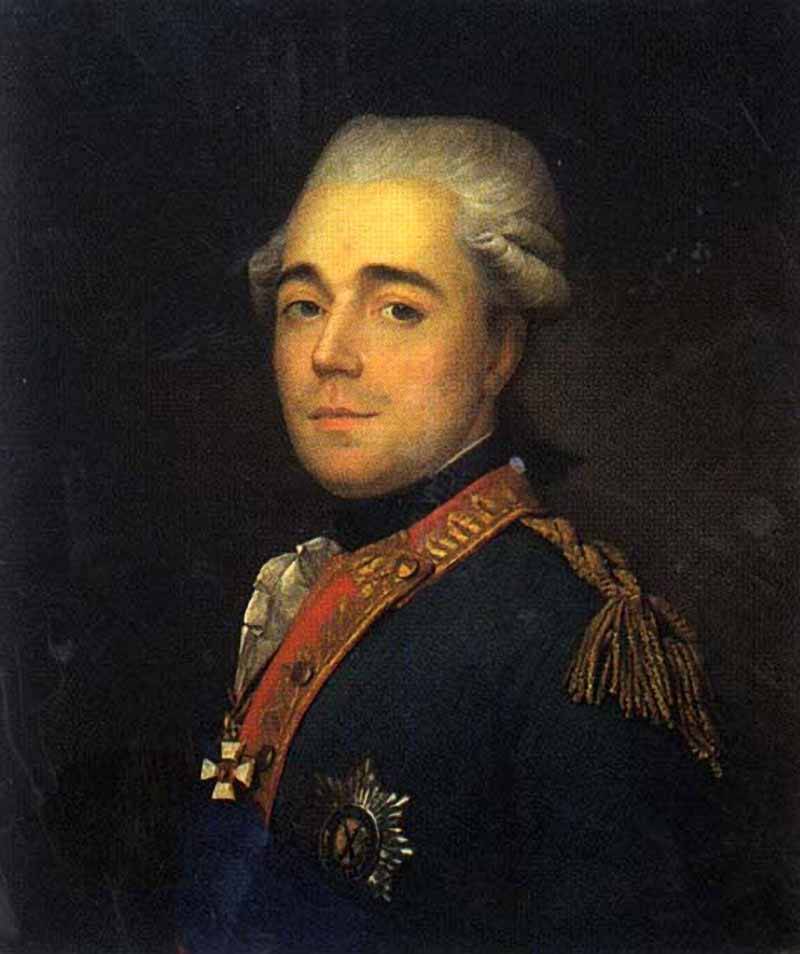
In the 1822 year, the Manchester Times newspaper wrote: “Every English sailor is ready to bring freedom and assistance to the unfortunate Poles (much of Poland was part of the Russian Empire at the time. - note). In a month our fleet will sink all Russian ships in all the seas of the globe. Who then will the Russian emperor? Kalmyk, surrounded by several barbarian tribes, a savage, whose power at sea is no greater than the power of the Chinese emperor. "
Even fighting with Russia, including at sea (in the same battle of Navarino, in 1827), the British did not change their principles. From the coalition under Navarin, where the joint Anglo-Russian-French squadron worked together, the British easily switched to the creation of a military alliance of a completely different direction. "A coalition war is needed, in which Britain and France would unite against Russia in order to destroy its main naval strategic bases - Sevastopol and Kronstadt, expel it from the Black and Caspian Seas, with the help of the Caucasian mountaineers and Persia to establish the complete domination of the British fleet . It is also necessary to raise other non-Russian peoples and unleash a civil war inside Russia. ”- English Colonel George De Lacy Evans, who published the book“ Intentions of Russia ”, spoke out on 1828. In essence, “enlightened” Europe managed to do this.
Already during the Crimean War, in 1854, the leader of the Liberal Party, the leader of the British House of Commons, John Russell, urged: in Europe".
After the end of the Crimean (Eastern) War (1853 – 1856) and the loss of Russia’s right to have a military fleet on the Black Sea, St. Petersburg finally decided to base its fleet in the Mediterranean - in the most convenient bay of the Côte d'Azur, in French Villefranche. Here, by the way, even a hundred years before, Russian ships of the Archipelago expeditions were based. For a long time at that time our ships were also in Greek ports.
From 1857 to 1907, the Mediterranean was a battlefield between England and Russia. Unfortunately, the events of those years, which largely predetermined the course of events of the twentieth century, are little known today to the general public. Meanwhile, what happened in those times could well be called the first cold war — a global confrontation between two great empires. And the Russian fleet, including those operating in the Mediterranean, as well as in other areas of the oceans, played a key role in upholding Russia's sovereign interests and translating its state leadership’s geopolitical designs.
Of course, England could not put up with it. The author of the best-selling book, The Rise and Fall of the British Empire, Lawrence James, wrote: “Since Nelson’s time, the British perceived the Mediterranean Sea as a British lake and were not prepared to tolerate the presence of anyone else on this lake. They barely put up with the presence of the French, but the appearance of the Russian fleet there, well-trained and equipped, threatened the British lines of communication with India. British statesmen were very afraid for this line, which, as Napoleon demonstrated in 1798, was so easy to break. ”
* * *
Until 1917, Russia held a fleet in the Mediterranean all the time. The ships made training trips, conducted scientific research.
Russian sailors of the ships of the cadet squadron of Rear Admiral V.I. Litvinov was the first to help the Italian cities affected by the 15 earthquake in December 1908. More than 100 years have passed since those tragic events, but the warm feelings and memory of grateful residents of Messina for their assistance are still alive. In 1911, the Messina knocked out a medal in memory of the selfless participation of Russian sailors in rescuing the inhabitants of the affected city. She was solemnly presented to the crew of the cruiser "Aurora". The grateful address was written: "Fraternal assistance provided by the Russian fleet is one of the most beautiful pages in the great book of Humanity, and when Messina rises from the ashes, she will never forget that thanks to your efforts she sees her sons alive."
The next stage of solving the task of strengthening the position of Russia in the Mediterranean was the time of the First World War, during which the task of mastering the Straits was set. In the southern theater, the main opponent was Turkey, which ultimately suffered defeats both on land and at sea.
True, only the Russian cruiser Askold took part in combat operations in the Mediterranean during the First World War. During the Dardanelles operation 1915, the cruisers were distinguished by artillery firing and by their traditional art of landing. The British Admiralty expressed admiration for the maritime minister of Russia Admiral Ivan Konstantinovich Grigorovich with the brilliant actions of the cruiser “Askold”. The officer commanding the landing force landed from this ship won three awards in one day - Russian, British and French.
During the First World War, at various times, Russian ships Chesma and Askold passed through the Suez Canal and Gibraltar to Arkhangelsk and Murmansk. The cruiser Varyag, 6 of the destroyers and the submarine Sv. George ", built in Italy. In 1916 – 1917 In the Mediterranean, from Arkhangelsk and the Far East, up to 45 thousands of Russian soldiers were sent to France to participate in battles on the Western Front. The Russian fleet already had the order to be ready for combat operations for mastering the outlets to the Mediterranean Sea — the Black Sea people were preparing for this thoroughly. However, this task did not have to be solved - the shot of Aurora in October 1917 announced the beginning of a new, different era in Russia ...
* * *
Forty years of absence of any active Russian policy in the Middle East led to the fact that Moscow faced a number of difficult problems. The Kremlin was in thought: where to start?
As the victorious power, the country is the founder of the UN, which made a decisive contribution to the Great Victory, Russia had the right to many things. One of the directions for the exercise of these rights is to dominate at least in the Eastern Mediterranean. The way to solve this problem, in principle, was specified from the time of Peter and Catherine. It was founded both on ideology and on a solid military-political base.
One of the top hierarchs of the Russian Orthodox Church of the first half of the twentieth century, Metropolitan of Kharkov Anthony Khrapovitsky, wrote that Russia should restore the Orthodox Byzantine Empire, resettling all Turks to their “original” Asia Minor. He believed that Russia should own a wide ribbon of land from the southern Caucasus to Damascus and Jaffa, to seize Syria and Palestine. “If this is done,” wrote the metropolitan, “our people will rush to settle in the country where our Savior lived. There will already be a place for purely Russian culture, for Russian, for Russian trade and industry. ” The events of 1917 – 1920, of course, made plans of this kind impracticable, but the ideas themselves remained.
Of course, their literal incarnation after World War II was not discussed. However, during the shortest time (1946 – 1948) the Kremlin has put several issues on the agenda. Find answers to all of them failed. In particular, the Soviet-Turkish Union was not concluded and the requirements set out in 1946 in the notes of the Soviet Government addressed to Turkey regarding the regime of the Black Sea Straits were implemented. Not everything turned out the way we wanted in the process of creating the state of Israel (1948), although this country owes its birth, above all, to the Soviet leadership and the position of the USSR in the UN. It was not possible to take control of Tripolitania, in which the Italians ruled before the war. Otherwise, already in the 40s, Soviet military bases, including naval ones, could appear on the territory of the western part of present-day Libya.
These foreign policy setbacks were caused by the position of the former allies in the anti-Hitler coalition, primarily the United States, who “pushed” Britain into a leading role after the war. The fact that the Americans in the Mediterranean change the British, it was clear at once: they did not withdraw their naval forces from its basin, transforming them into the 6 fleet. His mission was clear: to control the oil-bearing Middle East and prevent a "breakthrough" through the Black Sea straits of the forces of the fleet of the Soviet Union. “I have no doubt that Russia intends to invade Turkey and seize the Black Sea straits leading to Turkey,” said American President Harry Truman in 1946. At the same time, the Minister of the Navy and the first US Secretary of Defense, James Forrestal, stated on this occasion: “We are dealing not only with Russia as a national unit, but with the expansionist power of Russia in the times of Peter the Great, plus, in addition, an additional missionary religious force ... "
* * *
The emergence of a real threat of the USSR from the NATO bloc as a result of the growth in the region of the presence of the Navy of the Alliance countries, aircraft-carrying strike forces and nuclear submarines of the 6 US fleet equipped with nuclear weapons, creating a network of military bases in the Mediterranean countries put the USSR leadership in measures, the withdrawal of naval groups in the oceans and the far sea zone to neutralize the emerging threats from the sea.
Created after the war, the Soviet Ocean Nuclear-Rocket Navy, by its quantitative composition and combat capabilities, was able to ensure strategic stability in the world, territorial inviolability of its own maritime borders, maintain dominance in the coastal seas, protect its interests and the interests of allies in almost any area World Ocean, to promote ground forces in the coastal directions.
For the Soviet state, trade routes in the Mediterranean Sea and further - through the Suez Canal to the Indian Ocean, and also through Gibraltar - to the Atlantic and to the coast of West Africa to the areas of handicrafts and scientific research - were of vital importance. These shipping routes needed reliable protection from the possible impact of NATO forces, provocations by individual African states, pirates and terrorists of all stripes, as well as based on the requirements of their navigation and hydrographic development.
Since the middle of the 50-s, the military-political situation in the Middle East has gradually begun to deteriorate and take a tense, explosive character. In this difficult situation, the command of the Black Sea Fleet increasingly recognized the need to have its constantly deployed forces in the Mediterranean and above all submarines as the most secretive and effective kind of forces possessing, moreover, great autonomy.
The seamen’s proposal was supported in Moscow, as a result of which the USSR had an intergovernmental agreement with Albania in 1959, and twelve Black Sea submarines and two ship bases serving them began to be based in Vlora. New facilities appeared on the island at the entrance to the bay, a team of ships of the OVR, which included a division of minesweepers, was stationed at the base.
In the 60s, the breakthrough of the Soviet Navy into the Mediterranean was nevertheless carried out - starting with the entry into the military service of single ships, then detachments and mixed squadrons of the Black Sea Fleet. And 28 July 1965, another major event occurred - the nuclear submarine of the Northern Fleet entered the Mediterranean Sea for the first time.
The government of the USSR made a decision to form the 5 of the Mediterranean squadron of the Navy ships, an operational group of ships with their permanent presence in the Mediterranean Sea for combat service. The “six-day” Arab-Israeli war that began on 5 on June 1967 only accelerated the implementation of this decision.
The merit in creating, forming and managing the activities of the 5 Mediterranean squadron largely belongs to Admiral of the Fleet of the Soviet Union Sergey Georgievich Gorshkov, an outstanding naval commander and statesman. He, the Commander-in-Chief of the Navy, owns the words spoken as early as May 1965 at a meeting with submariners of the Northern Fleet A.P. Mikhailovsky and A.I. Petelin: "We need to create a permanently functioning grouping of combat forces in the Mediterranean, as a counterweight to the US NNXX th fleet ... It's time to think about the formation of a permanent operational squadron in the region, including nuclear submarines." And such a squadron was created on July 6 14 of the year.
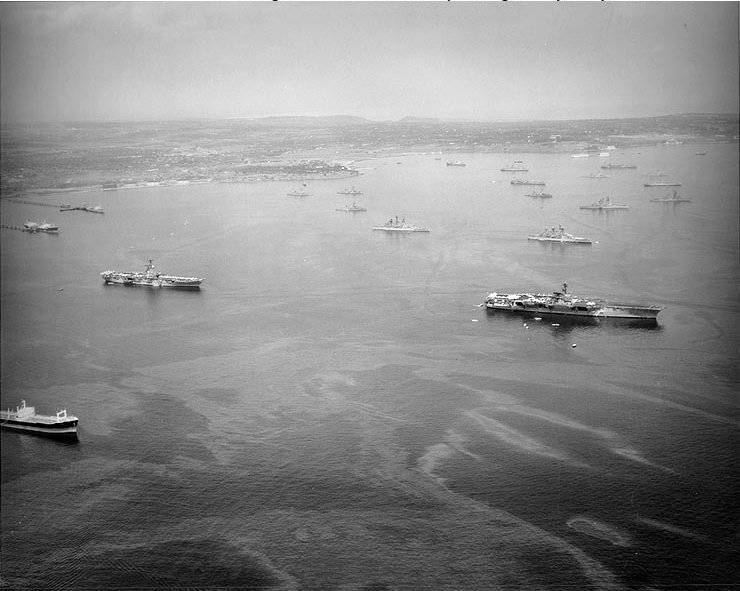
The Black Sea Fleet faced a difficult and responsible task - to confront threats to our state from the sea, to reduce the carrier and nuclear blackmail of the West to zero. The headquarters worked out ways and means of counteracting the forces of the fleet of possible nuclear strikes from the areas of the Mediterranean Sea and the Atlantic, for which Primorsky air defense groups, formations of the Northern and Baltic fleets, and Dalnaya were connected to the confrontation aviation. By the beginning of the 70s, the Black Sea Fleet had become a powerful instrument of the USSR’s foreign policy, which the West was now forced to reckon with ...
* * *
During the period from 1967 to 1978 a year, 1546 of Soviet ships and vessels, that is, at least 100 annually, visited the Mediterranean Sea. The average duration of combat service at different times was for nuclear submarines to 3 months, diesel submarines - from 6 to 12 – 13 months, surface ships and vessels - from 6 to 8 months.
New anti-submarine ships were put into operation, and with the launch into the Mediterranean Sea of anti-submarine cruisers of the 1123 project “Moscow” and “Leningrad” with KA-25 helicopters on board, as well as nuclear and diesel submarines, the solution of the problems of successful combat with American nuclear missile submarines became by reality. The emergence of fundamentally new aircraft-carrying ships of the type TAVKR "Kiev" with Yak-38 aircraft and KA-27 helicopters sharply increased the ability to solve problems in the Mediterranean Sea, gaining dominance in its eastern part.
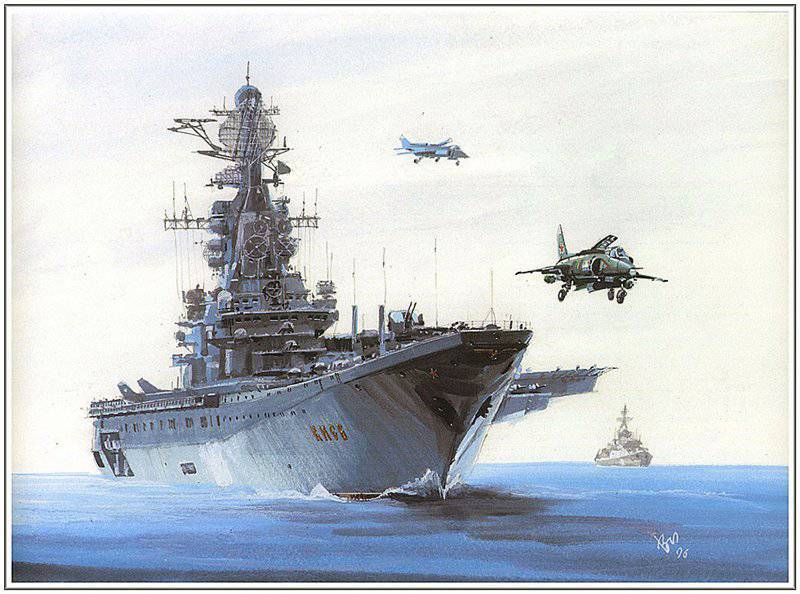
By the time of the formation of the 5 squadron in the Black Sea Fleet, taking into account the experience of local wars and conflicts, measures were taken to restore the Black Sea Fleet marine infantry, a brigade of amphibious ships was formed to deliver BlackBeaters detachments to the Mediterranean Sea, which then throughout the history squadron carried combat service in its composition.
In close cooperation and in the interests of the squadron, naval aviation units operated - squadrons of TU-16, IL-38, BE-12, AN-12 aircraft, which were based in 70 in the airfields of Cairo-West and Matruh (Egypt), and with 1985 TU-16Р aircraft operated from the airport Tifor (Syria). They carried out regular flights over the Mediterranean Sea with the task of aerial reconnaissance and identification of the areas of operation of aircraft-carrier formations and naval groups of the naval forces of the NATO countries.
In addition, starting from 1968, the squadron was almost constantly stationed before the 2 squadrons of the KA-25 helicopters based on the Moscow and Leningrad anti-submarine cruisers. Before 1991, these ships made 35 trips to combat service in the Mediterranean.
Help t
The antisubmarine cruisers “Moscow” and “Leningrad” became the first aircraft carriers (helicopter carriers) of the USSR Navy. The reason for the emergence of these large ships was the launch of American strategic missile-carriers of the type “George Washington” on alert duty — the 16 ballistic missiles “Polaris A-1” with a range of 2200 km pretty frightened the Soviet leadership.
The result was a “hybrid” with powerful rocket armament, the entire aft part of which was a runway with a long underdeck hangar. For the detection of enemy submarines, in addition to X-NUMX Ka-14 helicopters, the Orion under-sonar sonar and the Vega hydroacoustic station were on board.
Thus, the 5-I Mediterranean squadron, like the US 6 fleet that opposed it, consisted of almost all kinds of naval forces (surface ships, submarines, aircraft, marines, auxiliary fleets, service and special destination). She really opposed the operational-strategic alliance (US 6 fleet). 5-I squadron was the only in the history of the post-war Navy of the USSR, the formation of the Navy with such a composition and such purpose.
Admiral Yuri Nikolayevich Sysuev, the last squadron commander, later was the head of the VMA them. N.G. Kuznetsova, made an extremely accurate conclusion about the significance of the 5 squadron in his report at the solemn meeting devoted to the 40 anniversary of the squadron. "Being in the epicenter of 1967 and 1973 wars and armed conflicts between Israel and the Arab states, armed confrontation in Cyprus in 1974, and in 1982 in Lebanon, the use of US military force against Libya in 1986, the squadron ships were serious a deterrent to aggressive designs and aspirations. "
This, probably, is the main result of the squadron’s activity over the quarter century of its existence. Journalists, historians and marine painters, talking about the squadron, call it "the feat of the sailors of the Mediterranean squadron who saved the world during the Cold War."
* * *
From the first days of its existence, the squadron was in the midst of a military conflict in the Middle East.
The first two years were a real test of the created squadron for durability, but the presence of Soviet warships in the Mediterranean Sea and in the conflict zone contributed significantly to the further stabilization of the military-political situation in the Middle East. “When Soviet destroyers and submarines entered the Mediterranean Sea, it brought quick successes of Soviet diplomacy,” wrote the American Christian Science Monitor. It was not by chance that in August 1967, the former commander of the US 6 fleet, Rear Admiral William Martin said: “The Mediterranean Sea is not what it used to be. Previously, you could do whatever you want here. Not anymore…"
Despite the cessation of hostilities, the situation in the summer and autumn of 1967 remained extremely tense, especially after the sinking of the Israeli destroyer Eilat on October 10 by Egyptian missile boats, which dealt a crushing missile blow to it. This was the first case in the world of the use of anti-ship missiles on a surface ship. He showed high combat qualities and capabilities of rocket boats of the 21Р project with Soviet-made P-183 missiles that were in service with the Egyptian Navy.
The Americans undertook various actions, including open provocations, in order to “survive” the squadron from the Mediterranean. These are the dangerous actions of aircraft from aircraft carriers that imitated the attacks, and the dangerous maneuvering of NATO ships, and, finally, the unprecedented decision of the NATO High Command, adopted in 1968 in violation of the Geneva Convention 1958 on Freedom of Navigation, other international agreements, which allowed ships 6 fleet, located in the Mediterranean Sea, destroy Soviet submarines, discovered and not surfaced within 100 radius of the American ships. The subsequent statement by the Soviet government, published in the newspaper Pravda 24 in November 1968, cooled their ardor and, sensing the potential threat of reciprocal use of weapons by Soviet submariners, the Americans were forced to back down, abandoning such pirated actions. In addition to submariners, few now remember this, but how it could end, it is even difficult to imagine.
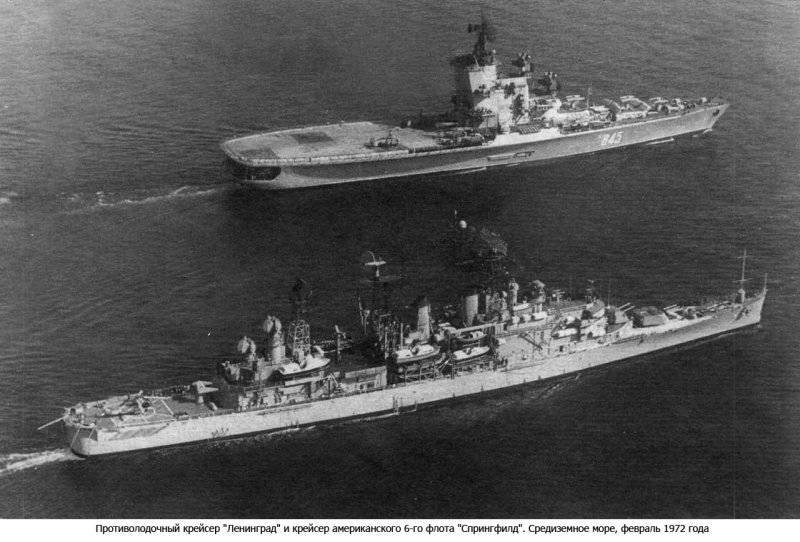
Of course, about 5-th squadron is not all written and told. But even from what is known, the only conclusion that suggests itself is that the whole post-war generation of Soviet soldiers served not in vain. The results of the whole heroic and unusual 25-year history of the squadron, glorious feats and valiant deeds from ordinary sailors to admiral - the squadron commander will forever be remembered by subsequent generations as the brightest page in the history of the national fleet.
* * *
In the 90-s of the twentieth century, after the squadron was disbanded, the exits of the Black Sea coastal forces to the Mediterranean were episodic. In October-November, 1997 in Zabosforye for the first time under the flag of St. Andrew’s left the TFR “Pytlivy” (commander of the campaign - Rear Admiral AV Kovshar). In 2002, for the first time in the modern history of the Black Sea Fleet in the Mediterranean Sea, the task force of the Black Sea Fleet warships under the flag of the First Deputy Commander of the Black Sea Fleet, Vice Admiral Ye.V. Orlova (GRKR "Moscow", TFR "Pytlivy"). At the same time there were several other Black Sea ships and vessels in the Mediterranean. And in April-July 2003, under the flag of Vice-Admiral E.V. Orlova, the first among the Black Sea people to be awarded the Order For Maritime Merit, a detachment of Black Sea ships entered the distant ocean zone. In the Indian Ocean, the responsible tasks were solved by GRKR “Moscow”, TFR “Pytlivy”, TFR “Smetlivy”, BDK “Caesar Kunikov”, tanker “Ivan Bubnov”, SB “Shakhtar”.
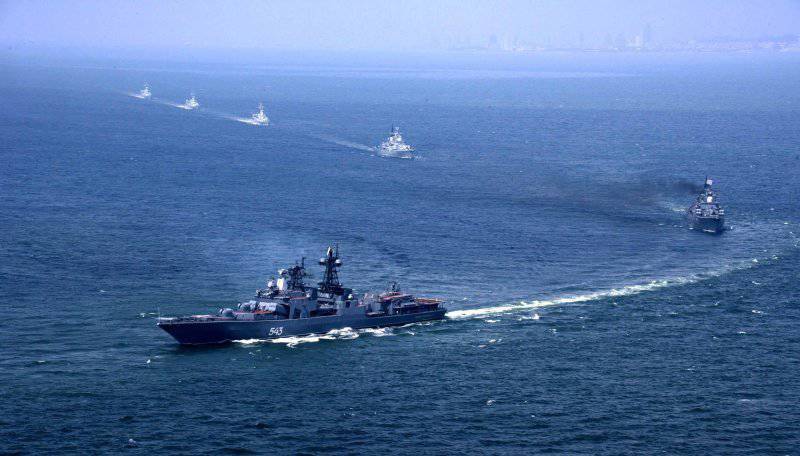
In subsequent years, warships and auxiliary ships periodically enter the Mediterranean to participate in international exercises, solving the tasks of combat service. The auxiliary vessel of the Black Sea Fleet is almost always at the berth of the PMTO in Syrian Tartus.
The current generation of naval sailors continues to fulfill their duty with honor, selflessly keeps his watch under the flag of St. Andrew in various parts of the World Ocean, using the vast practical experience gained in the squadron. This is confirmed by the unprecedented march from Sevastopol of the Black Sea Guards missile cruiser “Moscow” across three oceans to the Pacific Fleet and back to 2010 year.
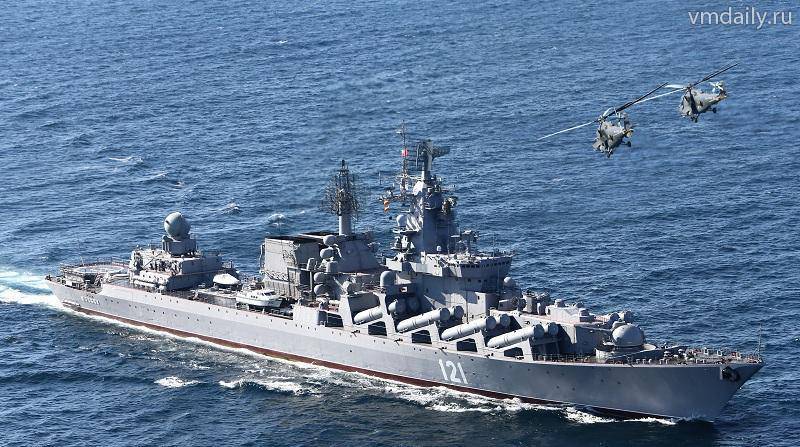
The second decade of the 21st century will be decisive in the fate of the Russian Navy and, accordingly, in maintaining the status of a great maritime power for the Russian Federation.
Many geopolitical problems today are solved with the help of sea power. This was demonstrated by local wars in Yugoslavia, Iraq, and Libya. Today this is proved by the events connected with Syria. The fleet is a tool for solving foreign policy tasks. And the fleet is a completely different level than in the era of the Cold War. Modern naval forces of the leading world powers are ready and able to solve the tasks of the "sixth generation wars" ... They operate with the help of a "long arm", fighting without direct contact with the enemy, using high-precision, efficient weapons based on new principles and technologies. The US Navy is already practicing in practice the principles of the “air-sea operation” - the new operational concept of the US armed forces. The fleets of the world, becoming qualitatively new in their composition, are still numerous, and the zone of their permanent presence in the oceans is expanding its scale.
Proceeding from this, the sovereign care of the sea power of the Russian state should also appear. In this regard, the activities of the Soviet military-political leadership in the period of the Cold War, which began almost immediately after the Second World War, are very indicative and instructive. Here, an example is the activity of the “Great Commander-in-Chief”, “Commander-in-Chief No. 1” of the Admiral of the Fleet of the Soviet Union, Gorshkov and his associates, who managed to change the course of history itself through the creation of an ocean fleet in a historically short period of time. And for the present and the next generations of Russian sailors, the activity of Mediterranean sailors, who in practice embodied the plans of S.G. Gorshkov and his "team".
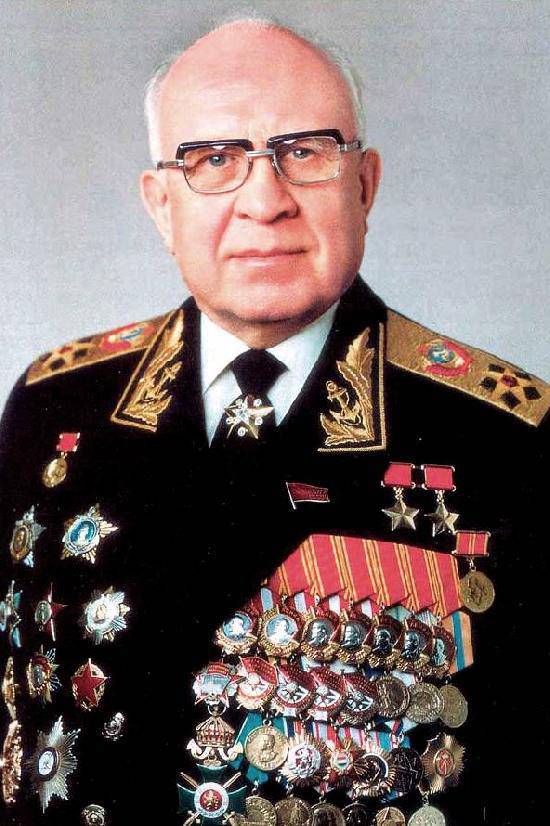
A number of authoritative military experts, among them Admiral Valentin Selivanov, who commanded the Mediterranean squadron, was Chief of the Navy Main Headquarters in 90, Admiral Viktor Kravchenko, who replaced him in that position, commanded the Black Sea State Duma Defense Committee, commanded by the Black Sea Fleet, who was in charge of the Black Sea Flem, and the Black Sea Fleet, who was in charge of the Black Sea Fleet, was in charge of the Black Sea Fleet, Admiral Vladimir Komoedov, who commanded the Black Sea Fleet years, not just expressed their views on the current state of the Russian Navy, and on the prospects for the activities of the Russian fleet in the Mediterranean on an ongoing basis. Some ratings sound pretty tough. You can agree with them, with something - to argue. But one thing is certain: Russia does not really have enough strength today to ensure its permanent presence in the eastern Mediterranean or in another geopolitical region of the World Ocean. And we are talking not only about quantitative parameters, but also about many other things.
Alas, Russia over the past decade has lost many of its allies and friends, with whom it cooperated in strengthening military, military-technical cooperation, as well as cooperation in the field of naval activities. Much has been lost, but little has been gained. This is eloquently indicated by the changes that have occurred, for example, before almost in our inland Black Sea. A quarter of a century ago, there was no doubt that the USSR dominates here completely. There was here and the combined fleet, which consisted of the forces of the Soviet Black Sea Fleet, as well as fleets of the States members of the Warsaw Pact - Bulgaria and Romania. Now NATO, whose members are Bulgaria, Romania and Turkey, dominates here, Georgia is striving to the Alliance with all its might. Fraternal, but not allied Russia Ukraine cooperates with NATO through all peacekeeping programs and other operations, which is not done by any country that is not a member of the North Atlantic Treaty Organization. A different, but still similar situation has developed in the Mediterranean basin, in its eastern part, where in the 70 – 80-s of the last century the Soviet Navy dominated in the face of the 5 OPESK. This means that today it’s impossible to get along with the simple direction of Russian ships to this area. To support the efforts of the Navy, victories on diplomatic fronts are necessary, although, of course, to a certain extent, naval sailors contribute to the achievement of these victories.
I remember whether it was true, or anecdote. When at the beginning of the 60-s began a “mess” in Congo, where Patrice Lumumba was overthrown and killed, Khrushchev allegedly asked the Minister of Defense Marshal Malinovsky: “When can we send our squadron to the shores of East Africa?” This question was diverted to the Commander-in-Chief of the Navy Gorshkov. He replied: "Four years later, not earlier." They asked him: “Why?” The commander answered frankly and extremely simply: “For this squadron, at least you need to build ships” ...
Whether it really was or not, such a conversation could well have taken place after the Khrushchev pogroms of the army and navy at the end of the 50s - the beginning of the 60s. And what happened then is incomparable with what happened after the 1991 year, when Russia lost the most powerful Armed Forces without battles and battles. And, perhaps, our Armed Forces received the most powerful blow from the “internal forces” that were carrying out military reform, reforming the army and navy, optimizing, modernizing, acquiring a “new look” by the Armed Forces, etc.
In parallel with these processes, a blow was struck to the country's economy and its basic industries - metallurgy, instrument engineering, shipbuilding and ship repair. As the sailors say, military science was driven below the waterline, and work on the development of new types of weapons and military equipment was curtailed. Evil tongues say that the Chinese and Indians became the rescuers of our military-industrial complex, for which we built ships and submarines of their truly ocean-going navies.
Perhaps one of the most discussed questions is the question of what forces of the Russian Navy will solve the task in the Mediterranean? It is not difficult to answer this question: all the ships capable of this, which today are part of the Northern, Baltic and Black Sea fleets. So it was during the existence of the 5-th OPESK. So obviously it will be now. And earlier, and in our days, apparently, the main burden will fall on the Black Sea Fleet. This is advisable - from a Black Sea base, a warship may be in the waters of the Mediterranean Sea just a day after the assigned task. Ships from the North and the Baltic only will require several weeks to go to the Mediterranean Sea, not to mention the use of lifespan, fuel, etc. It is worth giving a brief description of the state of the Black Sea Fleet. These data are not of a secret nature, they can be found in open sources, but at the same time they are not known to the general public. These figures make it possible even for non-specialists to draw conclusions about the current state of the Black Sea Fleet.
The Red Banner Black Sea Fleet of the Soviet Navy included 835 ships and vessels of almost all existing classes and consisted of more than 100 thousands of personnel. According to the results of the signing of the “basic agreements” between Russia and Ukraine, which determined the status and conditions of the Russian Black Sea Fleet's stay on the territory of Ukraine (from 28 in May 1997) and the completion of the division, the Black Sea Fleet of the Russian Federation was significantly reduced. It includes 655 ships and ships - 83 battle surface ships, 5 submarines, 56 battle boats, 49 special purpose ships, 272 boats and offshore ships, 190 support ships, including 12 ships of the 1 rank, 26 2 ships go rank.
When 496 ships and ships were scrapped over the period from 1997, only a few ships were brought into the Black Sea Fleet. These are: in 1999, the “Moskva” GRKR (after long-term repairs at the 61 plant of the communar and the 13 SRF PF), in 2000 - the MTShch “Valentin Pikul” (completed, originally intended for the Indian Navy), 2002 year - RKVP "Samum" (after 9-year repair at the Zelenodolsk plant "Red Metallist"), in 2006, the MTSch "Vice-Admiral Zakharyin". In addition, the fleet was replenished with several combat boats and low-tonnage support vessels that did not significantly affect the fleet’s combat readiness.
At the end of 2012, the Black Sea Fleet consisted of 244 ship and vessel of various classes, taking into account the units written off, close to write-off and disposal. This number includes offshore boats, barges, tugs, etc. Of all this, only 42 warships and boats are 2 of the 1 rank, 12 of the 2 ships, of which 2 are submarines and 10 of surface ships.
According to a number of indicators, the Black Sea Fleet is the “oldest” of all the fleets of the Russian Navy, the average lifespan of 2 1 rank ships is 34,3 of the year with standard service life of 30 years, 12 of 2 rank of 33,6 of the year with regulatory terms of 25 service years, 27 ships and combat boats of the 3 rank 27,1 of the year with standard service life of 15 – 20 years. The situation is aggravated by the fact that all warships and boats did not properly undergo a scheduled repair and modernization work on the 1992 of the year due to lack of funding. Now they keep afloat only thanks to the endless patching of holes.
It is also disturbing that the construction of ships and submarines in accordance with the State Armaments Program for the Black Sea Fleet will not be able to adequately compensate for the natural decline of the ship. Ships continue to age both morally and physically.
As is known, under the current State Armaments Program (GPO) before 2020, for all fleets of the Russian Navy, it is planned to complete the construction (build) of 78 surface ships and submarines. The Russian Navy must replenish 8 missile submarines, 16 multipurpose submarines, 54 surface ships of various classes. However, simple calculations suggest that even with the fulfillment of these plans by the 2020 year, the Russian Navy will be able to carry out the constant presence of groups of ships even in a limited number of areas of the far sea (ocean) zone with great difficulty. This means that the tasks of long-distance trips in the coming 3-4 of the year will be solved by the currently existing ships, designed and built in the "Brezhnev" and even "Khrushchev" times. Understanding this, in turn, sets the task of maintaining their technical readiness and modernization.
These figures reflect only part of the existing problems. Their solution requires tremendous work, including the improvement of Russian-Ukrainian relations, and a profound revision of the programs of armaments, shipbuilding, ship repair, military science, etc., etc. And yet, as a sailor who more than twenty times passed the Black Sea Straits, having spent a total of several years at sea, I can say: the decision of the Russian military-political leadership of the country to restore the permanent presence of the Russian Navy in the Mediterranean Sea with approval, enthusiasm, not to say with delight, is perceived by the sailors who serve today and the veterans. This decision has been waiting for a long time. Of course, the work will be colossal. But the Russian navy never shunned her. And today they are ready for it - in the hope that the plans to strengthen the state’s sea power and preserve the status of a great sea power for Russia will be fulfilled. I would not like to be deceived in these hopes ...
Sergey GORBACHEV, captain of the 1 rank, Candidate of Political Science, Scientific Secretary of the Military Scientific Society of the Black Sea Fleet, participant of the 11 long hikes to the Atlantic and Indian oceans, the Mediterranean Sea.
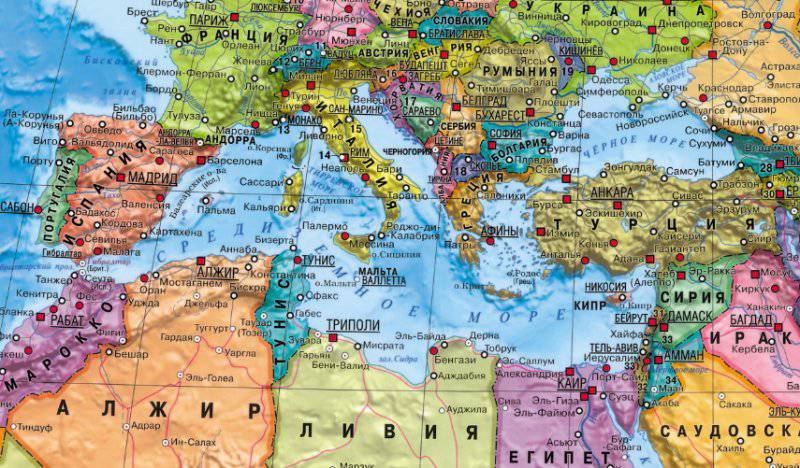
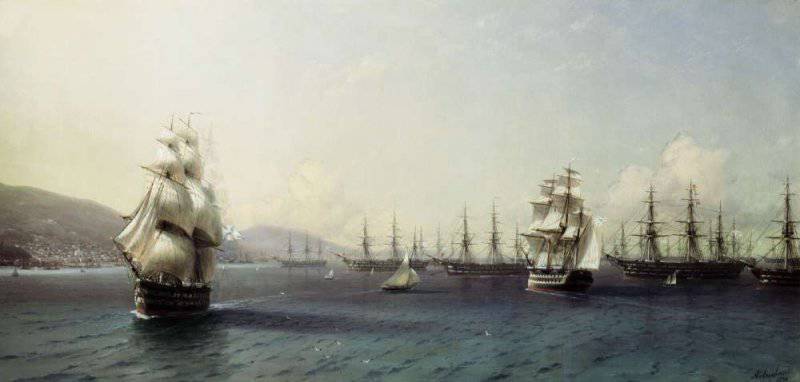
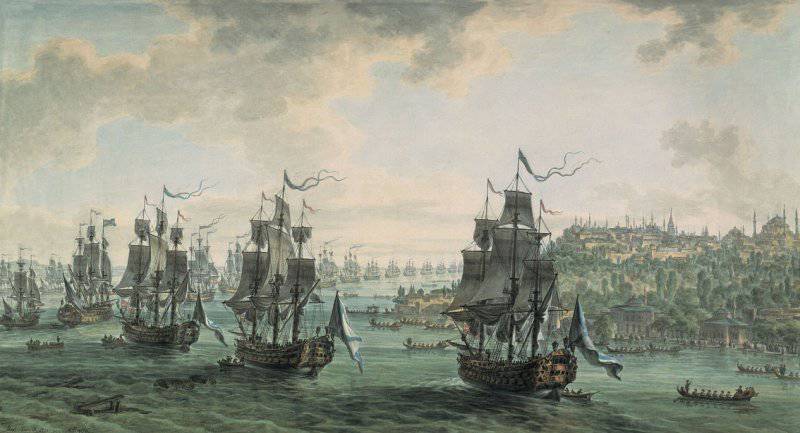
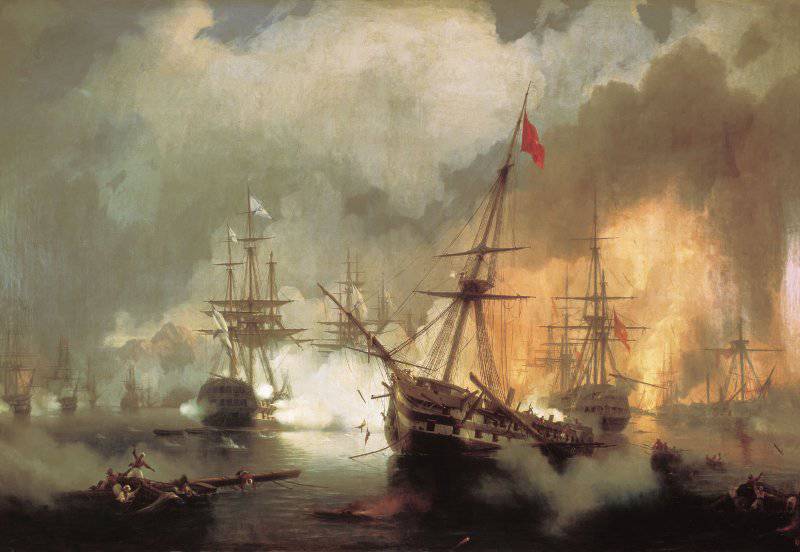
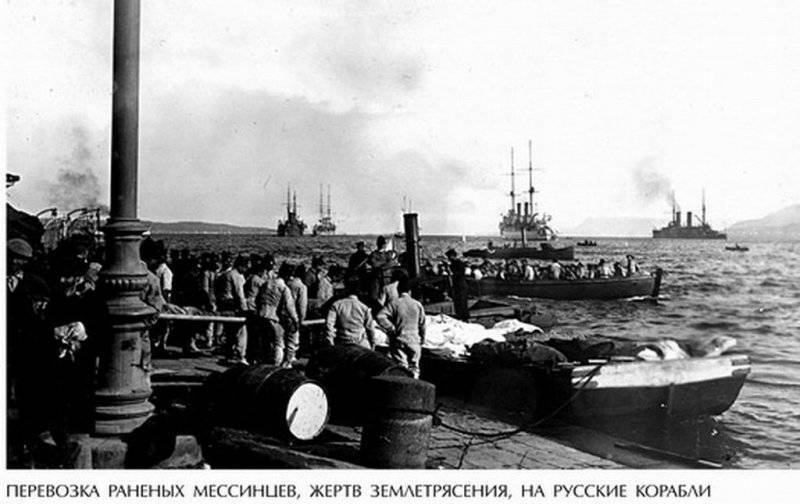
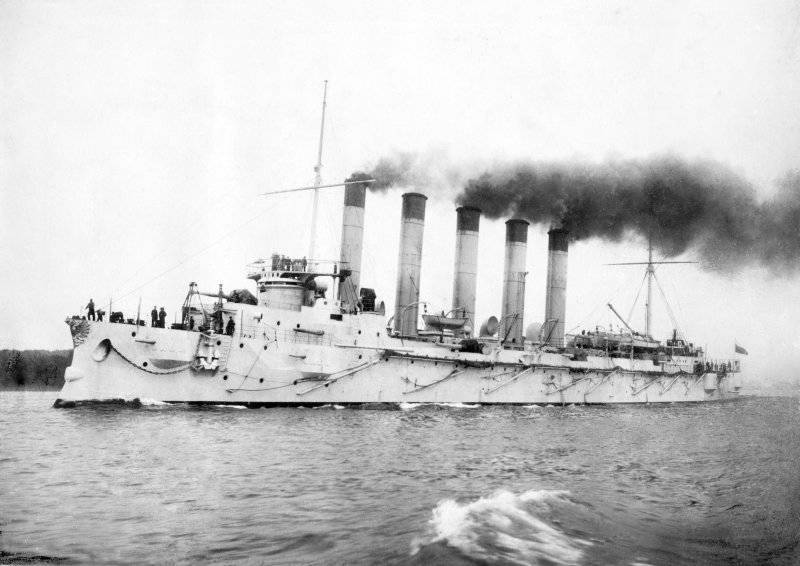
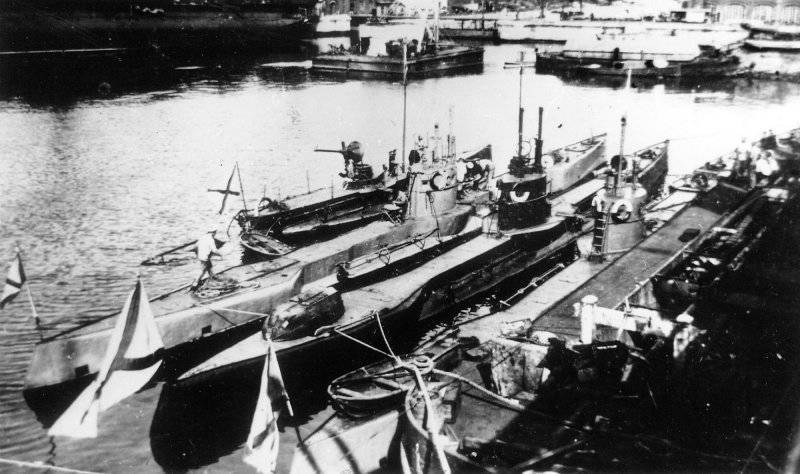
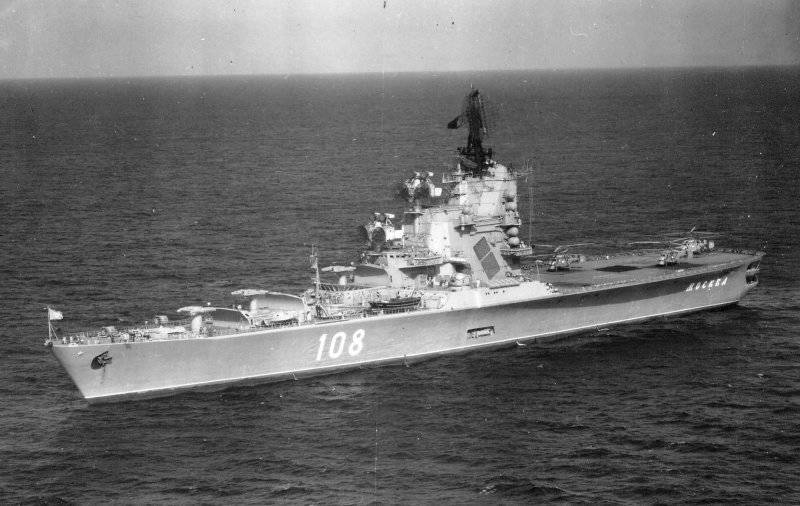
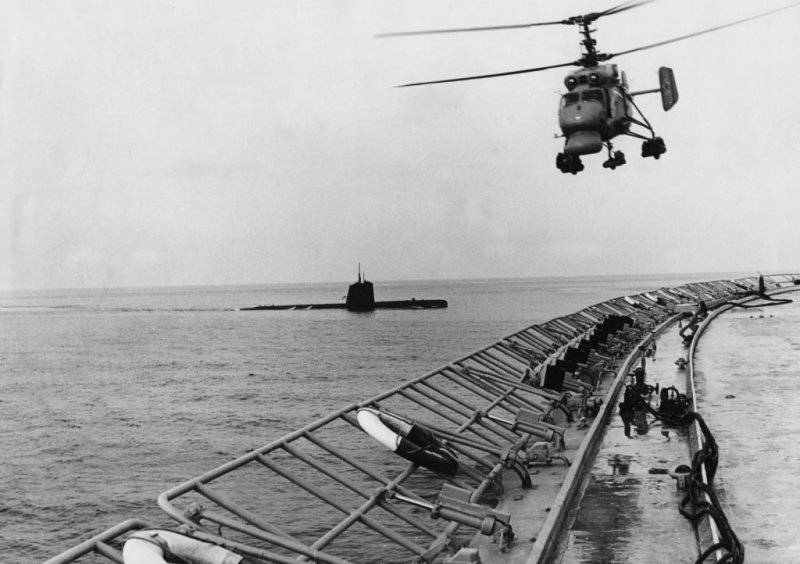
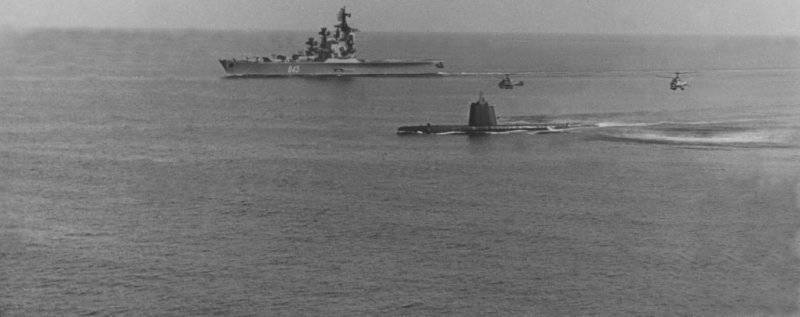
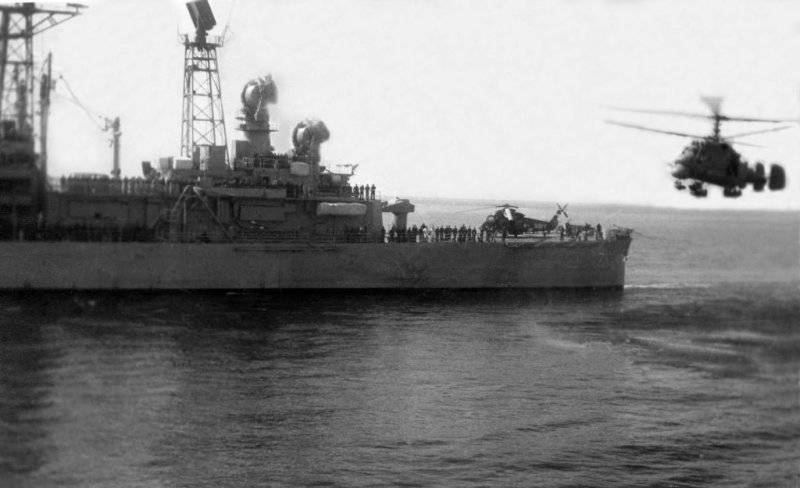
Information